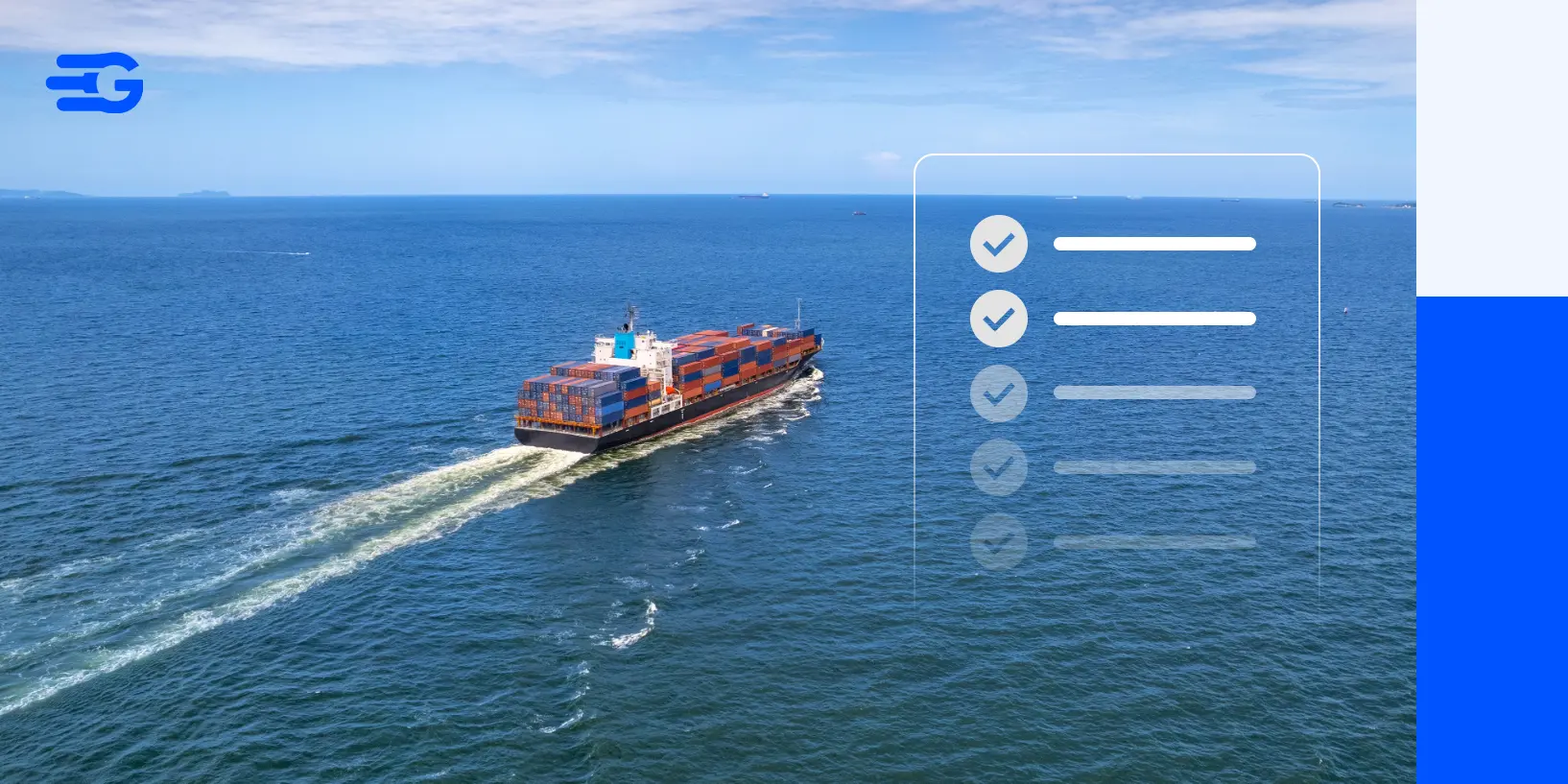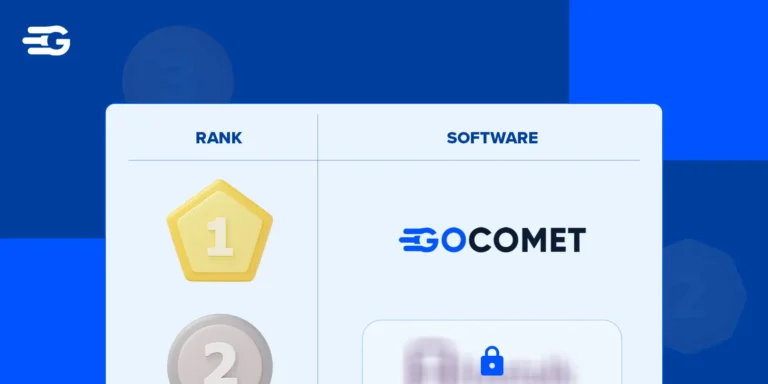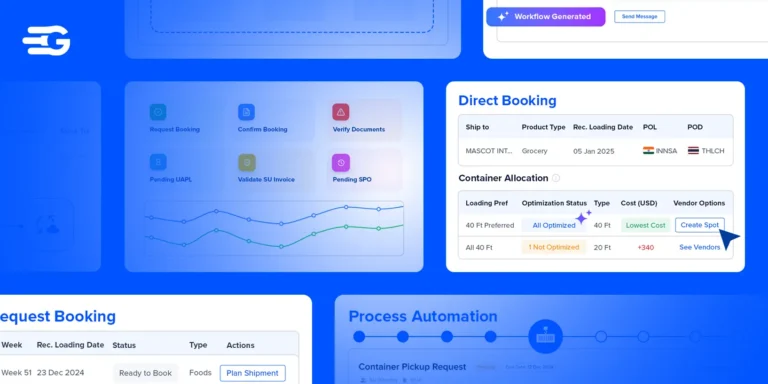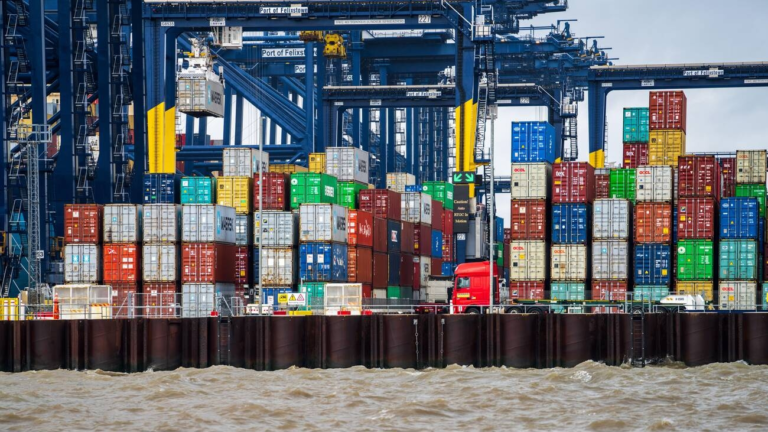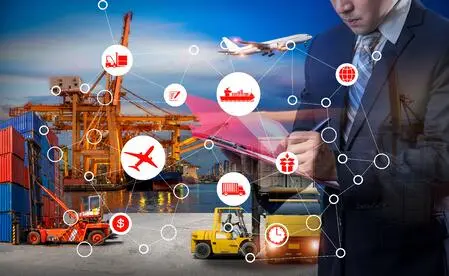Supply Chain Examples: An Ultimate List to Learn From
Global trade moves fast. Theory is helpful, but real value comes from putting strategies to the test in messy, unpredictable environments.
In this analysis, we dive into how different industries manage their supply chains. We break down the technologies they use and the strategies they trust to build resilient, high-performing logistics ecosystems.
Supply Chain Excellence Across Industries
Technology
Tech sector supply chains stand out for their integration of agility, visibility, and digital intelligence. Major players in this space demonstrate how predictive analytics, real-time automation, and data convergence are recalibrating how supply networks operate and adapt.
Apple brings clarity through control
Apple’s operational philosophy emphasizes control through consolidation. With a carefully vetted supplier ecosystem and vertically integrated manufacturing platforms, Apple has established an environment optimized for minimal disruption and maximum standardization.
As cited in Supply Chain Digital and validated by Gartner’s Top 25, Apple’s regional manufacturing hubs are key to managing time-to-market challenges while maintaining a consistently high quality across global deliveries. Predictive demand planning and strategic supplier alignment play central roles in sustaining performance.
Cisco builds agility through data
Cisco exemplifies what digital transformation can achieve at scale. By embedding IoT-enabled sensors and predictive algorithms into its network, the company has built a highly responsive supply chain capable of reacting swiftly to disruptions, such as semiconductor shortages.
Their capacity for rapid pivoting, supported by rich analytics and real-time visibility, highlights the critical importance of infrastructure that is not just reactive but also anticipatory.
Kodak scales global visibility with automation
Kodak, a historically significant player in the print and imaging industry, rejuvenated its global logistics framework by integrating GoComet GoTrack. This led to the automation of tracking across over 2,500 shipments annually.
Beyond reducing dependency on human-led inquiry chains by 80 percent, Kodak applied advanced analytics to identify port congestion risks and optimize shipment prioritization. Their digital transformation underscores how legacy organizations can adopt scalable, intelligent systems to enhance competitiveness.
E-Commerce
In e-commerce, scale and velocity reign supreme. The industry’s most successful entities leverage expansive logistics networks, AI-driven inventory planning, and seamless last-mile delivery systems to serve global markets with precision.
Amazon stays precise with fulfillment-first operations
Amazon has engineered a fulfillment strategy that converges robotics, multi-echelon warehousing, and machine learning-based demand forecasting. The company’s ability to guarantee same-day and next-day delivery stems from its mastery over inventory flow, warehouse automation, and geographic optimization. According to Supply Chain Digital, this deeply interconnected system is Amazon’s cornerstone in maintaining its global delivery promises.
Alibaba connects global sourcing with local delivery
Alibaba’s operations showcase the ability to bridge global procurement with localized distribution through Cainiao. With a logistics network that integrates 200-plus countries, Alibaba minimizes customs friction and last-mile inefficiencies by decentralizing fulfillment. This hybrid sourcing model allows for scalability without sacrificing agility.
We Prevented Financial Losses Exceeding $2.5 million
A GoComet client, a multinational textile company, was confronted with the implications of geopolitical instability in the Red Sea. Using GoTrack and GoPlan, the company introduced predictive ETA capabilities, realigned schedules, and informed downstream stakeholders in real time.
These actions prevented weekly financial losses exceeding $2.5 million and preserved customer confidence. The case provides a compelling argument for agility being driven by accurate and accessible intelligence.
Food and Beverage
This sector is typified by stringent timelines, geographical dispersion, and compliance with diverse safety regulations. Success is closely linked to local responsiveness and operational transparency.
Coca-Cola produces locally to stay fresh and fast
Coca-Cola operates within a distributed production model. Rather than centralizing its operations, the brand invests in local bottling infrastructure to ensure freshness and responsiveness to local demand.
This model, celebrated in Supply Chain Digital, minimizes transport distances and aligns with environmental goals through reduced emissions, making it a flagship example of the continuous-flow model.
Nestle builds trust through traceability
Nestle has embedded sustainability and traceability deep into its supply chain DNA. Blockchain, combined with satellite imaging, enables the company to validate ethical sourcing in real time. From cocoa and coffee to palm oil, Nestle’s tech-enabled monitoring infrastructure provides a transparent supply chain, enhancing consumer trust while ensuring compliance with global ESG mandates.
Fashion Retail
This sector demands rapid turnaround, real-time market alignment, and increasingly, accountability around sustainability. Leaders in fashion logistics rely on vertical integration and flexible manufacturing.
H&M keeps inventory under control
H&M maintains agility by aligning forecasting supply chain models with regional sales data. Through frequent demand sensing, the company minimizes overproduction and markdowns while preserving responsiveness. The data feedback loop enhances the speed of replenishment and supports lean inventory strategies across its global network.
Zara designs to shelf in days
Zara’s supply chain is engineered to collapse the design-to-shelf timeline to under two weeks. This is accomplished through proximity manufacturing, centralized design, and logistics orchestration that tightly integrates with retail trends.
Their model exemplifies the fast chain approach and continues to serve as a benchmark for supply chain responsiveness.
Automotive
Automotive supply chains operate under zero-defect mandates and are increasingly redefined by connectivity, modular sourcing, and regulatory oversight.
Toyota runs lean with just-in-time
Toyota’s iconic Just-In-Time system represents the epitome of lean logistics. By synchronizing production schedules with inbound supply chains and minimizing safety stock, Toyota achieves extraordinary capital efficiency. This strategy, while exposed to upstream disruption, has been perfected through decades of iterative refinement and supplier collaboration.
BMW adds transparency with blockchain
BMW’s deployment of blockchain technology for cobalt tracking reflects the auto sector’s shift toward ESG accountability. By integrating blockchain into its procurement systems, BMW gains irrefutable verification of origin, ensuring compliance with labor and environmental standards. This also enhances supply risk mitigation across a complex global network.
Pharmaceuticals: Smarter Freight Procurement
Pharmaceutical supply chains must adhere to strict quality controls while maintaining cost-effective operations. Digital sourcing tools provide a critical advantage.
Mega WeCare turns RFQs into savings
Confronted with limited supplier competition and legacy procurement practices, Mega WeCare adopted GoProcure. This resulted in an expanded vendor base, enhanced cost transparency, and an 11 percent savings on confirmed shipments within a single fiscal year. The platform’s ability to archive all interactions enabled robust compliance documentation and audit readiness, critical for an industry governed by complex regulations.
Manufacturing: Full-Suite Transformation
For manufacturing enterprises operating across geographies, the ability to integrate tracking, procurement, and invoicing into a unified digital platform has emerged as a competitive differentiator.
Essentra goes global with visibility and data
Essentra adopted GoComet’s full suite, including GoTrack, GoProcure, GoShipment, and GoInvoice, to transform fragmented logistics processes into a centralized intelligence system. The impact was measurable:
- Over 20 hours saved per invoice cycle
- A 4.34 percent reduction in freight costs
- Threefold increase in vendor responses
- Enhanced transparency through lane-wise analytics
Essentra’s case reinforces how convergence between functional silos and digital workflows elevates operational governance and performance.
Strategic Models of Supply Chain Management
The case studies in this report align with well-established theoretical models:
- Continuous-Flow Model: Used where demand is stable and production is repetitive. Coca-Cola is a textbook example.
- Agile Model: Suited for unpredictable environments. Cisco and the Red Sea example demonstrate its value.
- Fast Chain Model: Designed for fashion and consumer goods. Zara and H&M illustrate rapid product turnover.
- Efficient Chain Model: Used in mature industries with predictable demand and margin pressures. Toyota and Kodak typify this model.
Matching the model to the operational environment is key to ensuring resilience and strategic alignment.
Key Takeaways
- Centralization, as demonstrated by Apple and Essentra, supports operational consistency.
- Real-time visibility, showcased by Kodak and other GoTrack users, enables faster interventions.
- Agility, seen in Cisco and BMW, allows firms to respond effectively to macroeconomic and geopolitical shocks.
- Local production strategies, adopted by Coca-Cola and Zara, reduce exposure to cross-border risks.
- Sustainability and ethical sourcing are no longer optional. They are critical to brand equity and regulatory adherence.
These insights are rooted in extensive cross-industry experience. At GoComet, we support enterprises in operationalizing these principles through modular, AI-driven logistics platforms.
Conclusion
The examination of these real-world supply chain examples reveals a consistent pattern: sustained investment in visibility, integration, and analytics leads to measurable performance gains. Whether addressing routine complexity or responding to unpredictable disruptions, these organizations demonstrate that adaptability, clarity, and control define modern logistics excellence.
Organizations seeking to benchmark or evolve their supply chains must embrace strategic digitization, cross-functional coordination, and continuous improvement.
To evaluate your position on this maturity curve, connect with our team.
